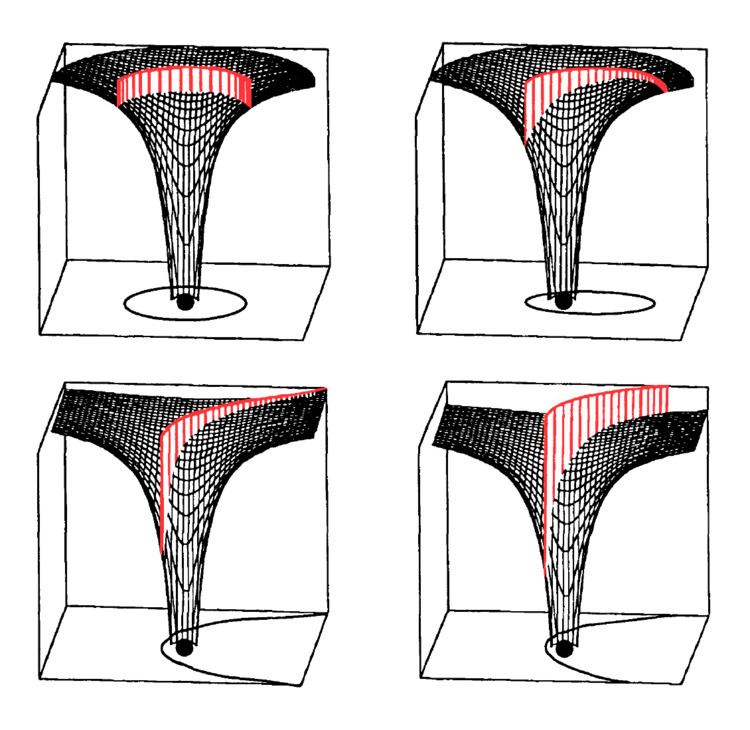 | ||
A circular orbit is the orbit at a fixed distance around any point by an object rotating around a fixed axis.
Contents
- Circular acceleration
- Velocity
- Equation of motion
- Angular speed and orbital period
- Energy
- Delta v to reach a circular orbit
- Orbital velocity in general relativity
- Derivation
- References
Below we consider a circular orbit in astrodynamics or celestial mechanics under standard assumptions. Here the centripetal force is the gravitational force, and the axis mentioned above is the line through the center of the central mass perpendicular to the plane of motion.
In this case not only the distance, but also the speed, angular speed, potential and kinetic energy are constant. There is no periapsis or apoapsis. This orbit has no radial version.
Circular acceleration
Transverse acceleration (perpendicular to velocity) causes change in direction. If it is constant in magnitude and changing in direction with the velocity, we get a circular motion. For this centripetal acceleration we have
where:
The formula is dimensionless, describing a ratio true for all units of measure applied uniformly across the formula. If the numerical value of
Velocity
The relative velocity is constant:
where:
Equation of motion
The orbit equation in polar coordinates, which in general gives r in terms of θ, reduces to:
where:
This is because
Angular speed and orbital period
Hence the orbital period (
Compare two proportional quantities, the free-fall time (time to fall to a point mass from rest)
and the time to fall to a point mass in a radial parabolic orbit
The fact that the formulas only differ by a constant factor is a priori clear from dimensional analysis.
Energy
The specific orbital energy (
Thus the virial theorem applies even without taking a time-average:
The escape velocity from any distance is √2 times the speed in a circular orbit at that distance: the kinetic energy is twice as much, hence the total energy is zero.
Delta-v to reach a circular orbit
Maneuvering into a large circular orbit, e.g. a geostationary orbit, requires a larger delta-v than an escape orbit, although the latter implies getting arbitrarily far away and having more energy than needed for the orbital speed of the circular orbit. It is also a matter of maneuvering into the orbit. See also Hohmann transfer orbit.
Orbital velocity in general relativity
In Schwarzschild metric, the orbital velocity for a circular orbit with radius
where
Derivation
For the sake of convenience, the derivation will be written in units in which
The four-velocity of a body on a circular orbit is given by:
(
For a massive particle, the components of the four-velocity satisfy the following equation:
We use the geodesic equation:
The only nontrivial equation is the one for
From this, we get:
Substituting this into the equation for a massive particle gives:
Hence:
Assume we have an observer at radius
The dot product of the four-velocities of the observer and the orbiting body equals the gamma factor for the orbiting body relative to the observer, hence:
This gives the velocity:
Or, in SI units:
